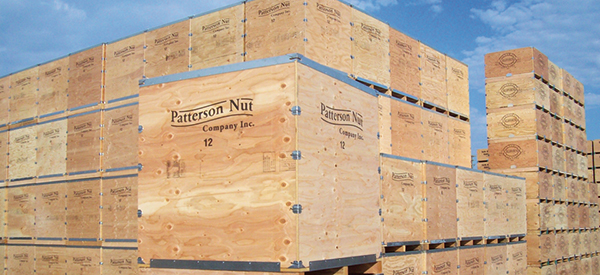Wood packaging – Data 2015
A segment featuring the presence of various container types, fundamental tools in the handling of goods in many manufacturing sectors: industrial packaging, pallets, crates for fresh fruit and vegetables, but also barrels and corks.

According to preliminary results, in 2015 the production of wood packaging in Italy has reached 2,408 t/000, registering a + 0.9%; turnover was 1,548 million euros, an increase of 5% over the previous year.
Looking at the totality of the types of wooden containers, exports registered a 4.6% decline in quantitative terms, while imports grew by 18%. Domestic consumption is expected to have finished the year with a growth of 3.6%.
A look at the Italian market
Italian wood packaging manufacturers, including material suppliers, number approximately 2,329: 67% of operators are in Northern Italy, 13.5% in the Center and 19.5% in Southern Italy and the islands (Sardinia and Sicily).
12% of concerns are specialized in the production of crates and bins for fresh fruit and vegetables; about 49% are pallet manufacturers (including repair services) and 39% are industrial packaging manufacturers.
Suppliers of raw materials destined for the production of wood packaging and importers of empty packaging also operate in the sector; pallet producers also include pallet repairers.
Pallets, industrial packaging, and crates
Wood packaging, as surveyed by Istituto Italiano Imballaggio, can be divided into three types: pallets, industrial packaging and crates for fresh fruit and vegetables. The first category has a vast array of application sectors; more than 75% of the second category, industrial packaging, is used in mechanics, electrical engineering and spare parts, while the remaining 25% concerns a broad product category (reels for tubing transport, cable reels, various boxes for wines and spirits, cork stoppers, etc.).
As for crates for fresh fruit and vegetables, 90% are used for fresh fruit and vegetables, and the remaining 10% is destined for fish.
Pallets. They are the most widely used transport packaging by sector. In terms of material and target Italian market, pallets can be divided into four categories: wood pallets (91%, down slightly); plastic pallets (8%, with a growth trend on 2014); cardboard pallets (0,9%) and metal pallets (0.1%, used for internal handling in heavy industry.
The progressive substitution of disposable pallets with reusable ones continues, as demonstrated by the spread of pallet renting, with a consequent increase in the number of custom products.
Industrial packaging. In this case, an opening statement is called for: in its surveys, the Istituto has also contemplated to the listings corks and ad hoc crates within the category. Because the values were registered in 2014, comparisons with 2013 are unreliable.
In 2015, industrial packaging, overall, have expressed a production of 479 t / 000 (+ 6.1% over the previous year).
Foreign trade is seen to be in decline by 18.6% with regard to exports and 2.8% for imports.
About 20% consists in staves, crates for spirits and cable reels. The main area of the industrial packaging segment, with a share of about 80%, is represented by large format crates for transporting machinery or components. In some cases, shipping containers are an alternative to wood industrial packaging.
It is at last important to consider that industrial packaging, in the wider context of wood packaging, represents a specialized management system, and its particular characteristics have to do with sector operators’ desire to manage product distribution services in specially designed containers.
Crates for fresh fruit and vegetables.
Handling fresh fruit and vegetables essentially involves two wood packaging types: bins and crates.
The former are used to transport goods from the field to the warehouse, while crates are used for shipping from the warehouse to retailers (supermarkets, open air markets, etc.).
Officially, wood crates are all “disposable”, but, in practice, unofficial “reusable” ones exist, which, according to some fresh fruit and vegetables sector operators, can be estimated at around 3-5% of the total.
Production in 2015 totalled 238 t/000 (+6.3% compared to 2014) after a two years showing a slight retraction.
In recent years, wood crates have considerably improved their appearance, to the point of playing a role in communication.
Plinio Iascone
Istituto Italiano Imballaggio

















